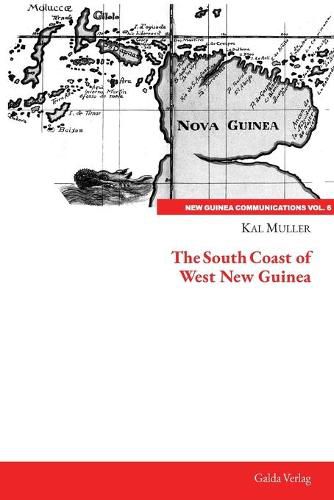The South Coast of West New Guinea
Kal Muller

The South Coast of West New Guinea
Kal Muller
This title is printed to order. This book may have been self-published. If so, we cannot guarantee the quality of the content. In the main most books will have gone through the editing process however some may not. We therefore suggest that you be aware of this before ordering this book. If in doubt check either the author or publisher’s details as we are unable to accept any returns unless they are faulty. Please contact us if you have any questions.
THE BOOK The South Coast of West New Guinea holds a number of well-known cultures, along with several other less researched ones. In the late 19th Century, the headhunting activities of the Marind operating in then-British New Guinea required the establishment of a Dutch military post at Merauke to stop the cross-border raids. A number of excellent ethnographic studies of the Marind have given us a rare understanding of this ethnolinguistic group in its pristine state. The Asmat were the last major group to be brought under Dutch control. This did not occur until well into the 1950s. The young son of the then-governor of New York State, Nelson Rockefeller, died while collecting Asmat carvings - probably by drowning but possible by being killed by a group perhaps still practising head-hunting. Missionaries of the Roman Catholic Church in the Asmat area helped to preserve the artistic talents of this group and helped them to retain a measure of pride in their way of life. The Kamoro also produced excellent woodcarvings. A portion of their land has been by the mining company, Freeport Indonesia in their lowlands infrastructure development. In return, the company offers various development programs to them (along with other Papuan groups) covering their economy, education and health necessities. Support for their woodcarving tradition is given through a locally-run foundation. Our texts emphasize what is known of the traditional elements of the various South Coast cultures. Now that warfare, cannibalism and head-hunting have stopped, the groups are considerably less ‘exotic’ but still present a fascinating way of life. THE SERIES The aim is to provide a conduit for the publication of studies on the Island of New Guinea, with its two established political divisions, but will also include other associated patterns of islands. It will enable contributions from new knowledge workers-with their dissertations-and from established scholars. As there are numerous scholar
This item is not currently in-stock. It can be ordered online and is expected to ship in 7-14 days
Our stock data is updated periodically, and availability may change throughout the day for in-demand items. Please call the relevant shop for the most current stock information. Prices are subject to change without notice.
Sign in or become a Readings Member to add this title to a wishlist.


